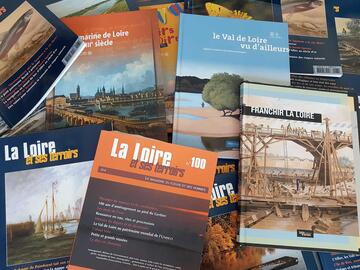
06/03/2025
[Fr] Décès de Philippe Auclerc
C'est avec tristesse que nous avons appris aujourd'hui le décès de Philippe Auclerc, co-fondateur de la maison d'édition "Loire et terroirs" et rédacteur...
Published on 11 March 2019 - Updated 29 March 2019
Cet article date d'il y a plus de 6 ans
Until 1 September 2019, the Musée de la marine de Loire is exhibiting two prestigious showpieces harking back to the slave trade: a shackle and a publication by Abbé Grégoire. On loan from the Bibliothèque nationale de France (BnF), these pieces can be seen in the area of the museum that has been specially laid out for the occasion.
Excerpt from the press release:
"These are two artefacts from the collections of the Bibliothèque de l’Arsenal:
- a slave shackle
- a publication by Abbé Grégoire entitled The slave trade and black and white slavery, by a friend of people of all colours.
The slave shackle is composed of two separate components: an iron bar and a chain with shackles. The bar with cuffs and the chain were used to attach the slaves, either once on the ship or prior to boarding. As poignant symbols of the suffering inflicted on African prisoners and the cruelty of the slave trade, in 1867 they were donated to the Bibliothèque de l’Arsenal by Hippolyte Carnot, the executor of Abbé Grégoire's will. He got this shackle from Henri Dutrône (1796-1867), former secretary of the Society for the Abolition of Slavery.
These pieces are now part of the Abbé Grégoire collection. Bequeathed by the Abbé himself to the Bibliothèque de l’Arsenal, this collection includes a major ensemble of publications on slavery and the colonies. Abbé Henri Grégoire (1750-1831), a prominent figure during the French Revolution, fought for Jewish emancipation, public education, freedom of worship and the protection of monuments among other causes. As a tolerant humanist and member of the Friends' Society of Black People, he also fought courageously for the abolition of slavery and the slave trade. He particularly played a decisive role in the first abolition of slavery in 1794.
In this respect, in his book The slave trade and black and white slavery, by a friend of people of all colours, he calls for the prohibition of the slave trade. He particularly refutes the arguments of proponents of the slave trade and is indignant that France can continue to practise it.
These items resonate with one of the themes addressed in the museum's collections: the industries born out of trade with overseas colonies. This loan from the BnF has enabled the Musée de la marine de Loire to broach subjects which, with no collection of its own, it has hitherto been unable to explore: the use of slavery to produce colonial commodities and the anti-slavery movements.
Such exhibits are seldom put on public display and, as such, this is a unique opportunity for the museum and its visitors to contemplate these objects, so strongly associated with the memory of slavery and the slave trade and the battle for their abolition.
http://www.musee-marinedeloire.fr/
"